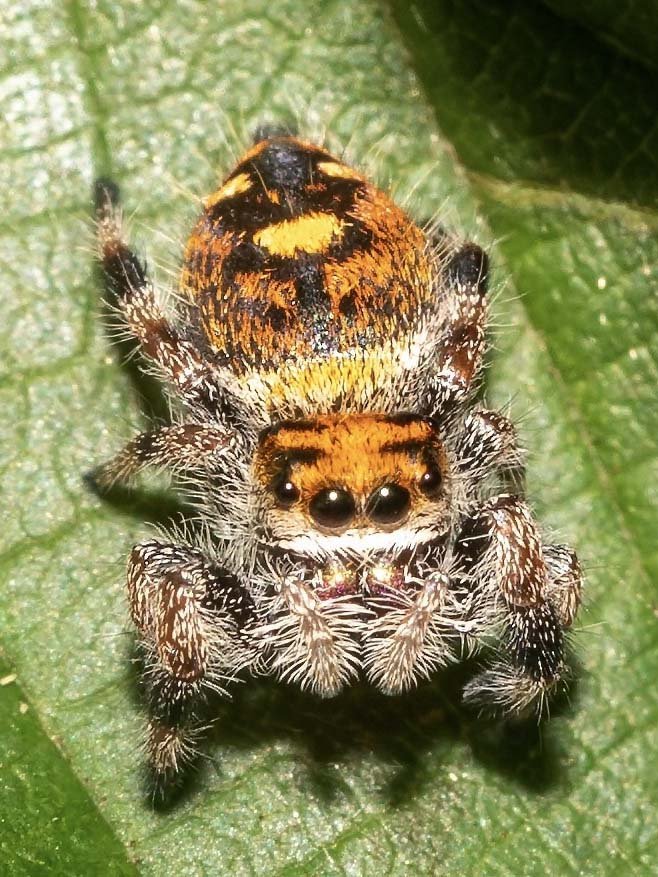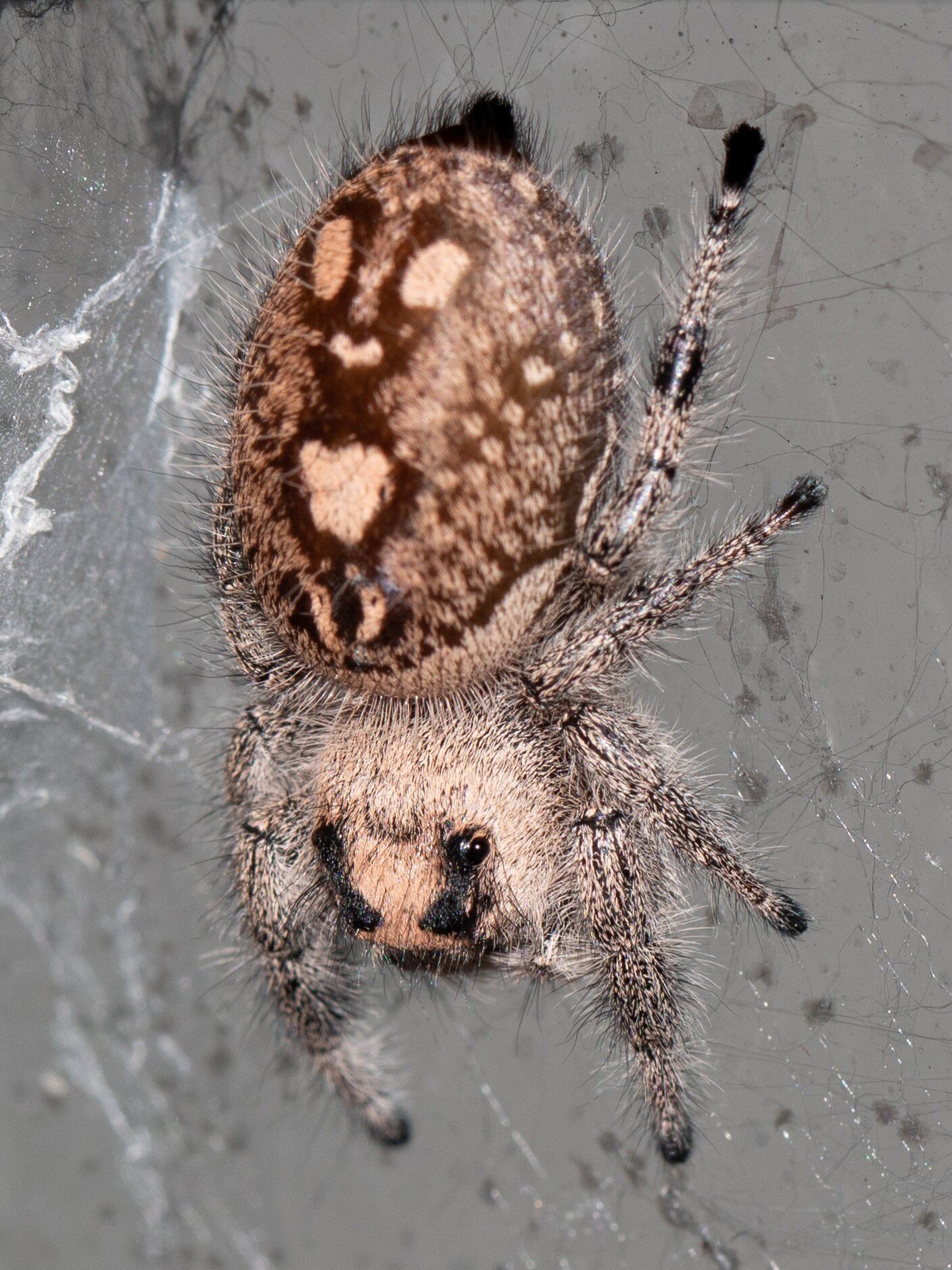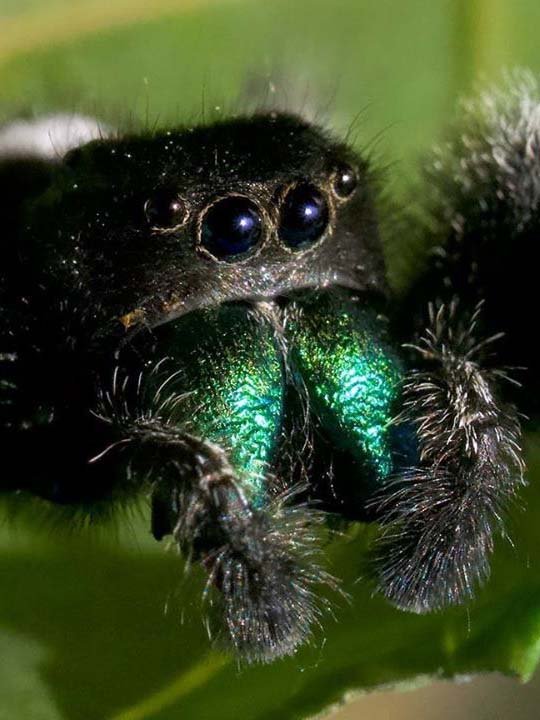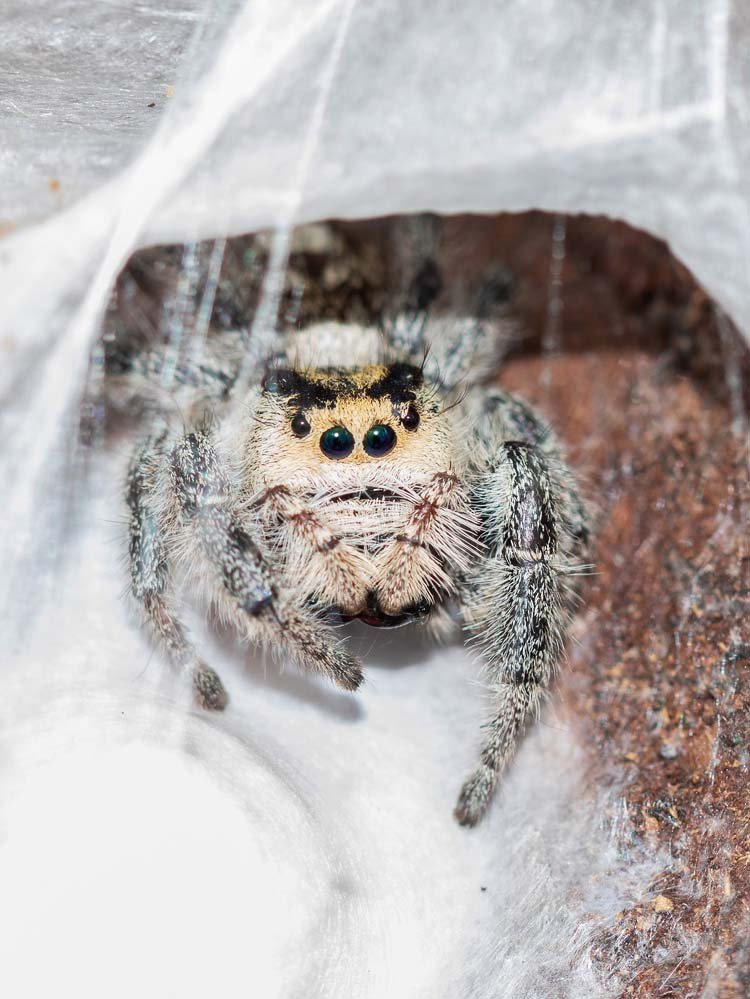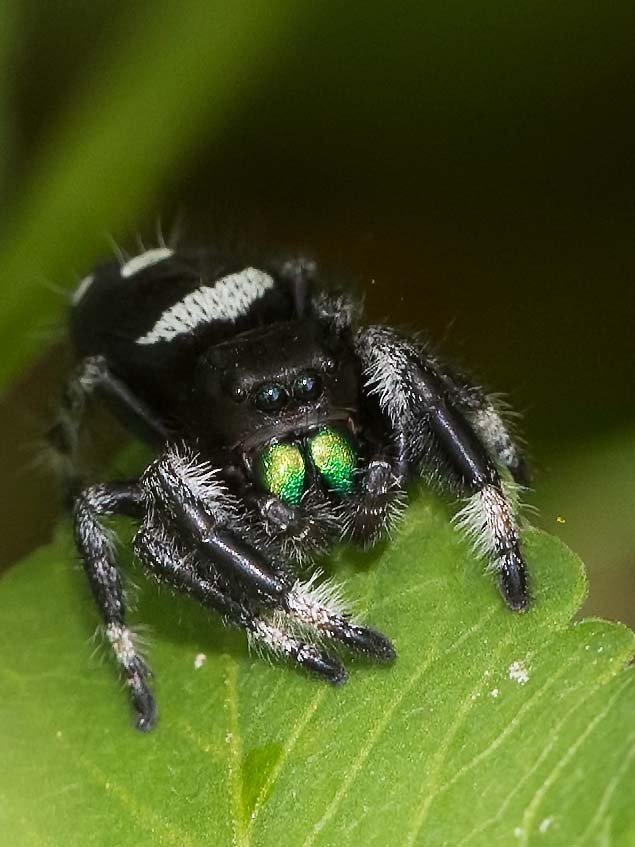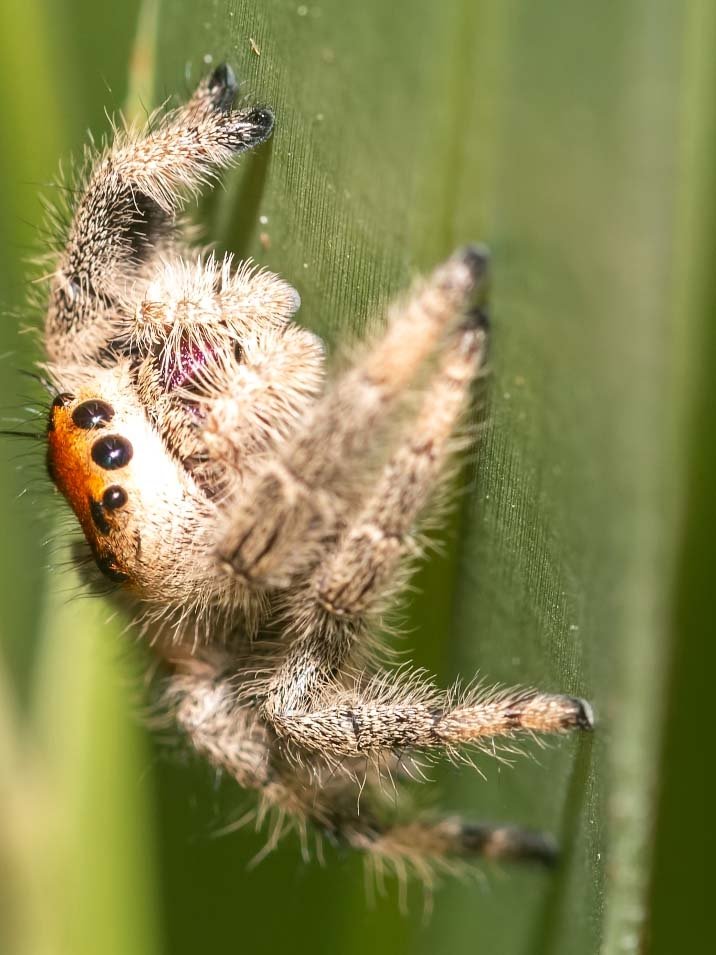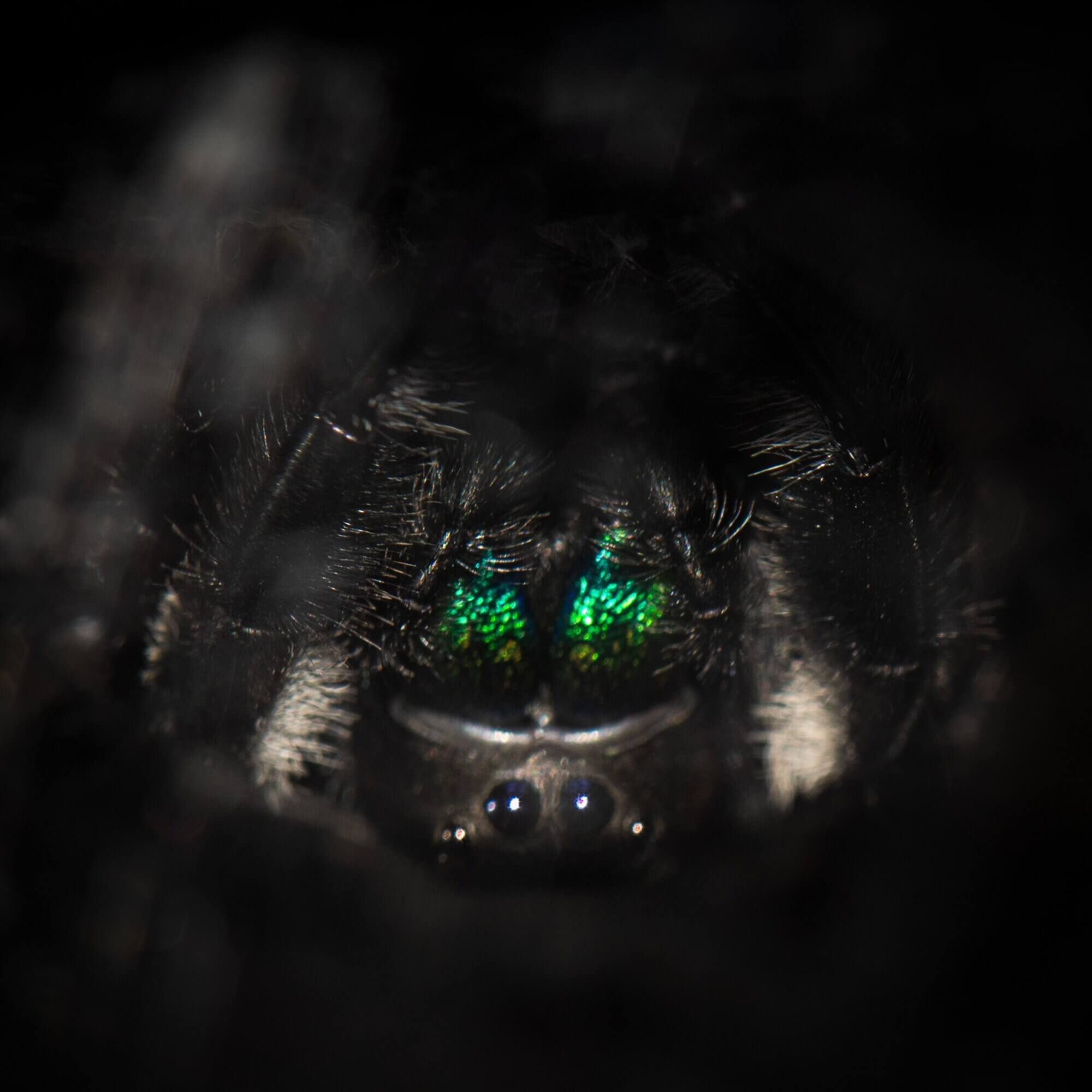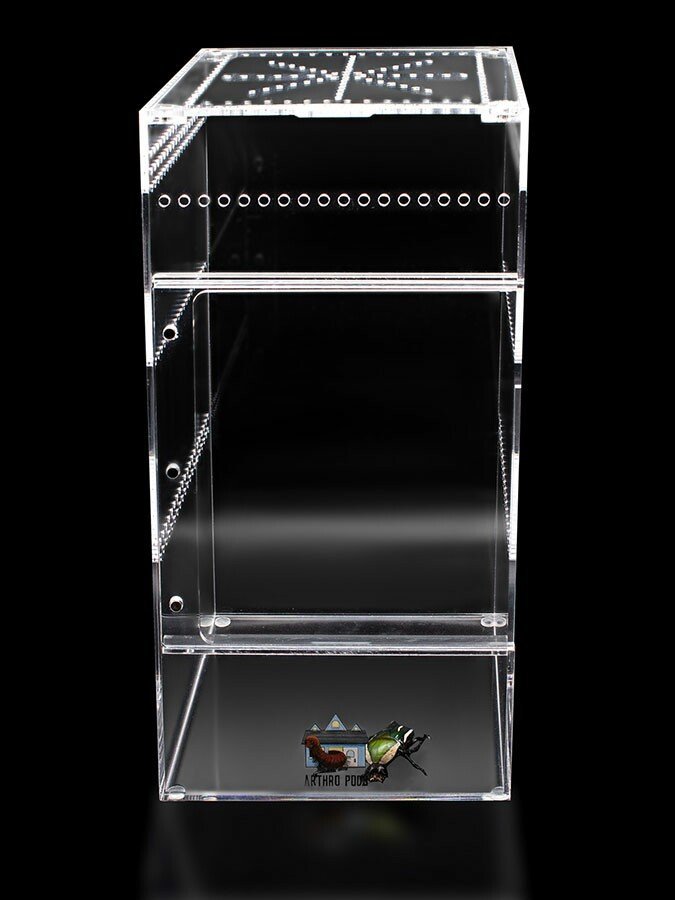Phidippus regius
Are you a newcomer to spiders, even leaning more towards an arachnophobe? No worries, the Regal Jumping Spider is an approachable and adorable entry-level pet that can help you overcome your fears! With its great demeanor, its a relatively short-lived pet that is very user-friendly in their care, and is very forgiving when mistakes are made as you're "figuring it out".
Are you a newcomer to spiders, even leaning more towards an arachnophobe? No worries, the Regal Jumping Spider is an approachable and adorable entry-level pet that can help you overcome your fears! With its great demeanor, its a relatively short-lived pet that is very user-friendly in their care, and is very forgiving when mistakes are made as you're "figuring it out".
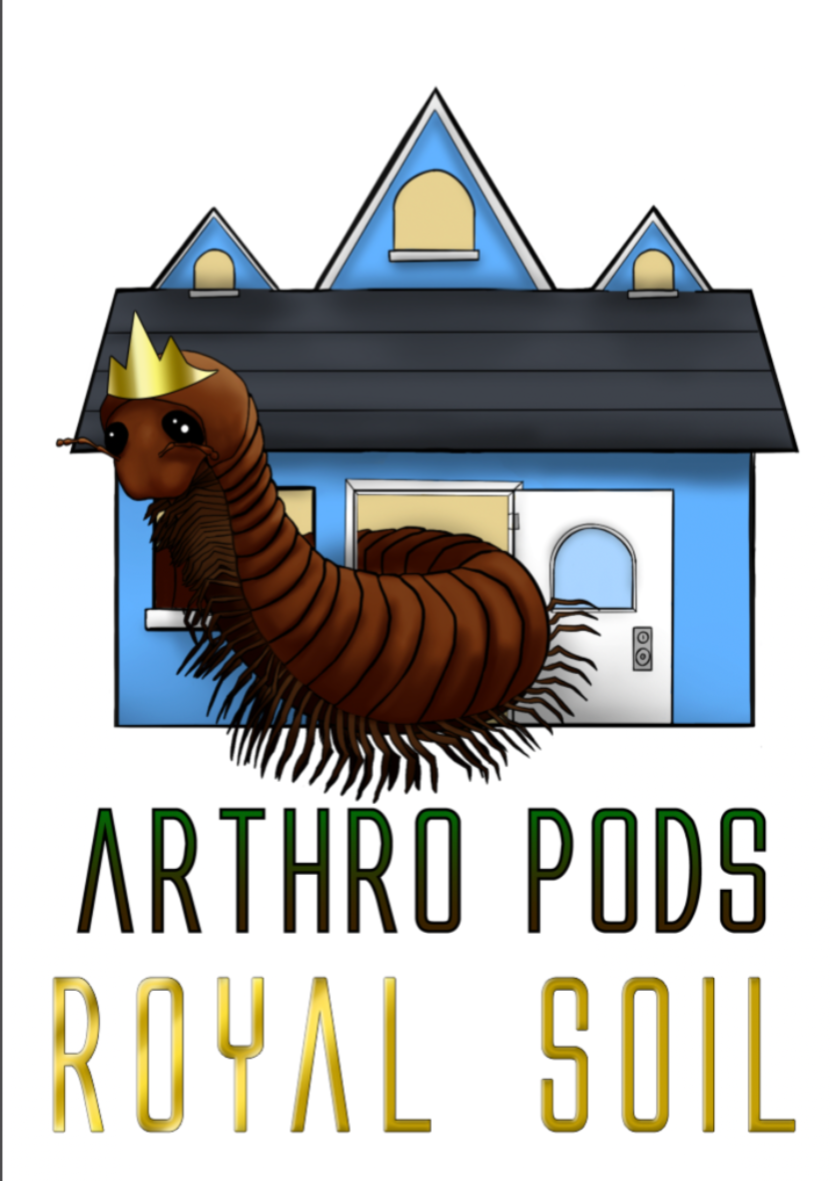
Are you a newcomer to spiders, even leaning more towards an arachnophobe? No worries, the Regal Jumping Spider is an approachable and adorable entry-level pet that can help you overcome your fears! With its great demeanor, its a relatively short-lived pet that is very user-friendly in their care, and is very forgiving when mistakes are made as you're "figuring it out".
What's the ideal diet for a Regal Jumping Spider?
Jumpers can eat a variety of feeders. Stick to crickets, dubia roaches, small silkworms, or blue bottle spikes/flies, and only occasionally should they be given mealworms as the occasional treat due to their size.
How should I keep a Regal Jumping Spider?
For this particular creature, we recommend a small Arboreal Bliss enclosure. When they are full size, we recommend upgrading to a medium Arboreal Bliss enclosure, if you’d like your little jumper to have some room. Feed them every four days, twice if their opisthosoma (abdomen) looks small, but if the opisthosoma is wider than their prosoma (pneumothorax), then wait a couple of days to feed.
How long could a Regal Jumping Spider live?
Females are stated to live upwards of 2.5 years, while the males of the same species typically only live between 1.5-2 years. All estimates are based on multiple sources.
Care Guide for Phidippus Regius
Key Points
Diet diversity: Offer a variety of prey items smaller than the spider's abdomen. Blue bottle flies, crickets, and roaches are excellent choices.
Housing options: Provide spacious enclosures for non-gravid females, but use smaller containers for gravid females to prevent baby escapes.
Humidity balance: Maintain 55-60% humidity, misting every other day with a fine mister. Avoid direct spraying and large water droplets.
Breeding preparation: Expect multiple egg sacs with hundreds of babies. Use 32 oz deli cups with mesh lids and pantyhose to contain offspring.
Handling with care: These spiders are generally docile and can be held, making them excellent for overcoming arachnophobia.
Lifespan considerations: Be prepared for a short lifespan of 1-2.5 years, with males typically living shorter lives than females.
Some photos provided by iNaturalist, credit to:
Eridan Xharahi, some rights reserved (CC BY)
Richard Stovall, some rights reserved (CC BY)


